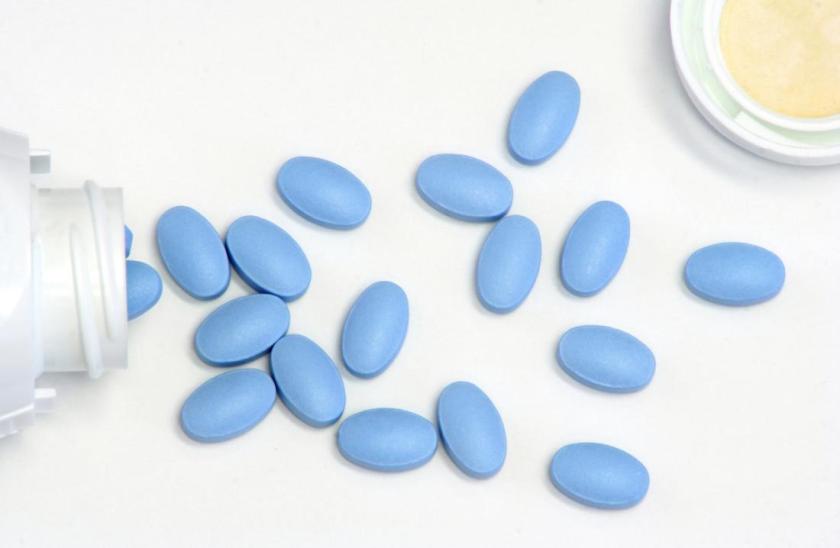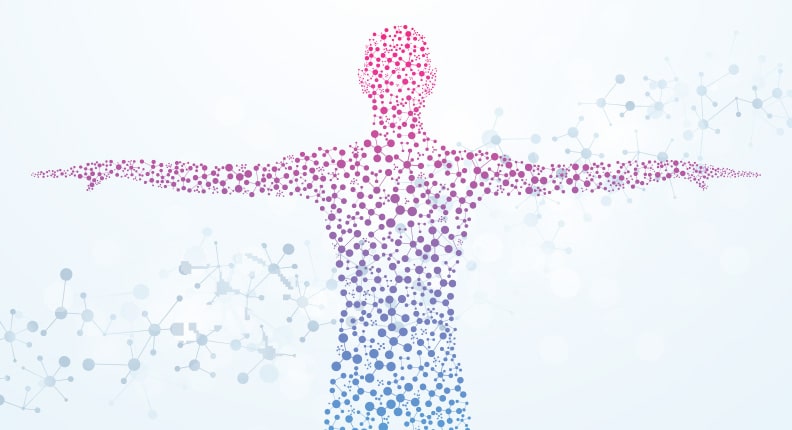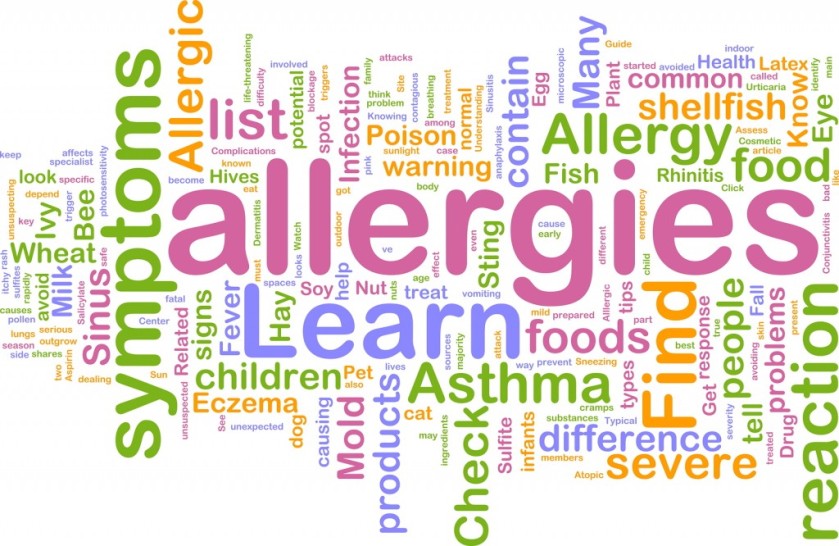
Our world is toxic, and lately endocrine disruptors have been the focus of the health industry. New products are popping all over the market, and may new companies are launching in the market, claiming to be free of endocrine disrupting chemicals.
I just encountered a new product line called Poofy Organics that looks promising with products that are clean and free of these dangerous and pesky chemicals. They have a diverse product line and best of all, they are affordable! Read on about what these chemicals are, what they do to your body and I will share the link to where you can order if you wanted to try for yourself.
I first encountered the topic of endocrine disruptors from one of my friends a few years ago who started making her own hair and skin care products using cleaner, phthalate free ingredients. At the time, I did not know much about endocrine disruptors, but it was also around the time that BPA was being removed from baby bottles.
What are endocrine disruptors?
They are chemicals that may interfere with the body’s endocrine system and are showing to have adverse developmental, reproductive, neurological, and immune effects in both humans and wildlife (Endocrine Disruptors, n.d.). They can be found in a wide range of every day products such as pharmaceuticals, pesticides, plastics, metal food cans, detergents, toys, and cosmetics. Currently there are numerous studies, supported by the NIEHS, to determine if exposure to endocrine disruptors may result in human health effects, particularly infertility and cancer (Costa, Spritzer, Hohl, & Bachega, 2014). Studies indicate that endocrine disruptors can affect multiple areas of reproduction, development and metabolism.
Endocrine disruptors primarily exert their effects by binding to hormone receptors and transcriptional factors. (Costa et al., 2014) There are 3 main methods that affect the hormone levels in the body (Endocrine Disruptors, n.d.):
- They can mimic naturally occurring hormones such as estrogens, androgens, and thyroid hormones, potentially over-stimulating (called the agonistic effect)
- They can bind to a receptor within a cell and block the endogenous hormone from binding, such as anti-estrogens and anti-androgens (called the antagonistic effect)
- They can interfere with the way natural hormones or their receptors are made or controlled, by altering metabolism in the liver.
However, recent studies are showing that they can also alter the enzymes involved in the synthesis or catabolism of steroids (Costa et al., 2014). I find most alarming is that the highest incidence of reproductive disorders that were observed in the second generation of the women exposed to endocrine disruptors, such as diethylstilbestrol (DES). This suggests that the epigenetic changes can affect subsequent generations.
Where are endocrine disruptors found? Everywhere! They are ubiquitous in our modern society, unfortunately. Research indicates many places where they can be found to accumulate. There are 3 main categories that they are listed in, which are BPA, DEHP, and phytoestrogens. However, I felt the EWG did a fairly good job summarizing them down to the Deadly Dozen. I will summarize 5 of them below:
- BPA-biphenol A-It is one of the chemical compounds of highest production worldwide; more than 6 billion pounds are produced annually. (Costa et al., 2014) . It has been identified in 95% of urine samples of the American population and also found in serum of pregnant women. BPA is most recognized on its effects on thyroid hormones, particularly its estrogenic and adipogenic activities, which could definitely linked to metabolic diseases such as hypothyroidism, diabetes, obesity, and cardiovascular disease. One way to minimize exposure is to eat fresh foods and avoid canned foods. Also I found it interesting that BPA is found in cashier receipts. In fact, levels of BPA in cashiers who handle receipts were higher after their shifts than in between shifts. (Our Chemical Lives, 2015)
- Phthalates-These are plasticizers used as softeners, but are also found in paints, solvents, toys, personal and medical care products, and cosmetics and blood transfusion bags (Costa et al., 2014) The main routes of human exposure are food and skin absorption, and it can occur during trans placental route and during breastfeeding. DEHP, Di (2-ethylhexylphthalate), are implicated in the toxicity of the reproductive system and also increased proliferation of fat cells, which predisposes you to visceral obesity (Costa et al., 2014). Also epidemiological studies have correlated phthalates in cord blood and lower gestational age at delivery. Other areas where studies link their effects in with male fertility, lower sperm counts and defects in male reproductive system (Deadly Dozen Endocrine Disruptors, 2013). Exposure to DEHP can alter DNA methylation patterns in both the prostate and testicular cells (Sweeney, Hasan, Soto, & Sonnenschein, 2015). These epigenetic patterns seen are also heritable, meaning DNA methylation patterns and histone modifications have been observed in successive generations (Sweeney et al., 2015). “Interruption of hormonal function within the developing tissues have been shown to lead anatomical changes in new born male babies as well (Sweeney et al., 2015).
- Dioxins-These compromise a group of organochlorine compounds that include PCBs (polychlorinated biphenyls). They are found in insulators, flame-retardants, lubricants, and machine and transformer fluids. They can disrupt both male and female sex hormone signaling, and if exposed in the womb, they can permanently affect sperm quality and lower the sperm count in men (Deadly Dozen, 2013). They are fat soluble and can easily contaminate the food chain because they accumulate in fat cells. They are also not readily metabolized and excreted and half a half-life of 8 years (Costa et al., 2014). They are found in products like meat, fish, milk, eggs and butter, so the best wait to limit exposure is to cut back on eating animal products.
- Pesticides- A recent study in UK reported there are approximately 127 pesticides identified with endocrine disrupting activity. Among the classes of pesticides that stand out are organophosphates, carbamates, and organochlorines (Costa et al., 2014). Also, there is still some contamination of DDT found in some developed countries despite being banned. Atrazine is the most commonly detected pesticide found in ground and surface water (Costa et al., 2014). It is linked to breast tumors, delayed puberty and prostate inflammation in animals, and even prostate cancer in humans (Deadly Dozen, 2013). Organophosphates can effect brain development, behavior and fertility. They can also interfere with testosterone communication, lowering both testosterone and thyroid hormone levels. Ways to limit exposure is to buy organic, use EWG’s Shoppers guide to pesticides in produce to assist in finding fruits and vegetables with fewest pesticide residues.
- PFC-perflourinated chemicals used in non-stick cookware. I chose this one because I love to cook, but accumulation of this chemical makes home cooked meals not as healthy as they should be! Perfluorochemicals are so widespread and extraordinarily persistent that 99 percent of Americans have these chemicals in their bodies (Deadly Dozen, 2013). One particular compound, PFOA, has been shown to be resistant to biodegradation, which mean it will never break down in the environment. PFOA is linked to decreased sperm quality, low birth weight, kidney disease, thyroid disease, cholesterol, etc. It seems to affect the thyroid and sex hormones the most. One way to minimize exposure is to eliminate the usage of non-stick pans. There is a pan called the “Green Pan” that is non-stick, ceramic based pan that is made from a sand derivative that does not use PFOA or PFAS during the production process. It also is heat resistant to temperatures up to 450C and it will not release any toxic fumes if you accidentally overheat it.
Here is some information about the Green Pan:
https://www.greenpan.us/why-ceramic (Links to an external site.)
Here is the link to the EWG 2017Shopper’s Guide to Pesticides in Produce
https://www.ewg.org/foodnews/#.Wfy0prpFxfw (Links to an external site.)
One thing I found was interesting was that licorice (Glycyrrhiza glabra) root extract (LRE) may help alleviate the toxicity of endocrine disruptors (Chu, de la Cruz, Hwang, & Hong, 2014) IT is commonly called “gamcho” in Korea exhibits anti-oxidative, chemo-protective, and detoxifying properties. In recent studies, special attention has been given to the study of plant and their isolates for the prevention of diseases. Licorice root has been used in over 70% of Chinese medicines and has been used by human beings for over 4000 years. According to a study in 2014, there is some promising evidence that licorice root extract can be used as a potential toxicity-alleviating agent to prevent the occurrence of endocrine disrupting-induced tumors and can help modulate the risk of cancer to excessive exposure to endocrine disruptors. Furthermore, licorice root has other healing properties and can act as an adaptogenic agent for modulating adrenal insufficiency, and is definitely worth exploring further.
So for the best part, here is the link to order Poofy. POOFY ORGANICS was founded in 2006 after a family member was diagnosed with breast cancer. The family was determined to stop using products laden with toxic chemicals. With no suitable alternatives to turn to, they made it their mission to find the safest and most effective ingredients for our products. I am waiting for a box of samples to arrive, I can’t wait to try these products out!!!

https://dena.poofyorganics.com/
References
Chu, X. T., de la Cruz, J., Hwang, S. G., & Hong, H. (2014). Tumorigenic effects of endocrine-disrupting chemicals are alleviated by licorice (Glycyrrhiza glabra) root extract through suppression of AhR expression in mammalian cells. Asian Pac J Cancer Prev, 15(12), 4809-4813.
Costa, E. M., Spritzer, P. M., Hohl, A., & Bachega, T. A. (2014). Effects of endocrine disruptors in the development of the female reproductive tract. Arq Bras Endocrinol Metabol, 58(2), 153-161.
Dirty Dozen Endocrine Disruptors. (2013, October 28). Retrieved from https://www.ewg.org/research/dirty-dozen-list-endocrine-disruptors#.WfykCrpFxfw
Endocrine Disruptors.(n.d.) Retrieved from http://www.ewg.org/research/dirty-dozen-list-endocrine-disruptors (Links to an external site.)Links to an external site. (Links to an external site.)
Our Chemical Lives. (2015, March 31). Retrieved from https://www.youtube.com/watch?time_continue=1553&v=J9SWBAUlAvw
Sweeney, M. F., Hasan, N., Soto, A. M., & Sonnenschein, C. (2015). Environmental endocrine disruptors: Effects on the human male reproductive system. Rev Endocr Metab Disord, 16(4), 341-357. doi:10.1007/s11154-016-9337-4












